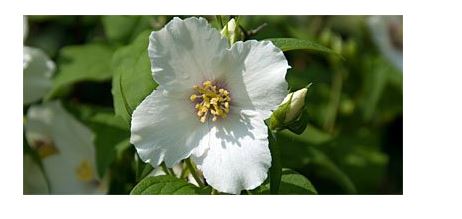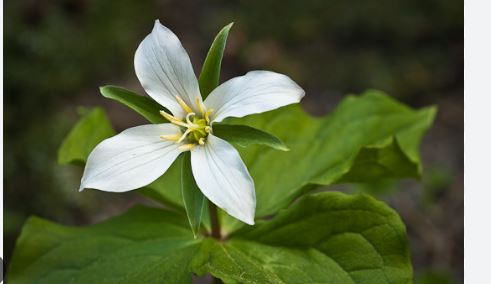
Flowers with four petals often form a distinctive cross-like shape, creating a simple yet striking appearance. These blooms, found in various plant families, come in colors like white, yellow, pink, or purple, typically paired with green foliage. They thrive in diverse climates, often in USDA zones 3–10, and are valued for ornamental gardens, wildflower meadows, or edible landscapes due to their aesthetic and ecological roles.
Many of these flowers prefer full sun to partial shade and well-drained soil, adapting to rocky, sandy, or moist conditions. Their compact or sprawling growth suits borders, rock gardens, or woodland settings. Some are annuals, completing their cycle in one season, while others are perennials or biennials, returning or reseeding over years, requiring minimal maintenance.
Blooming seasons vary, often peaking in spring or summer, with some extending into fall. Their four-petaled structure attracts pollinators like bees, butterflies, and moths, supporting local ecosystems. Certain species produce edible leaves, seeds, or roots, adding culinary value, though some may be toxic, necessitating careful identification.

Some four-petaled flowers self-seed prolifically, naturalizing easily, but can become weedy if unchecked. Their resilience makes them ideal for low-maintenance gardens, though invasive tendencies in certain species require management. Their delicate or vibrant blooms enhance landscapes, offering visual appeal and habitat benefits.
Ecologically, these flowers contribute to biodiversity by providing nectar and pollen. Their adaptability to shade or poor soils suits urban or challenging sites, while their fragrance or edibility enriches sensory gardens. With proper care, they deliver consistent beauty, blending functionality with charm in diverse settings.

Flowers With 4 Petals
Common Evening Primrose (Oenothera biennis)
This biennial wildflower has bright yellow, bowl-shaped flowers with four petals and deeply veined green leaves. Native to North America, it thrives in full sun to partial shade and well-drained soil (zones 4–9). Blooming from summer to fall, often at dusk, it attracts moths and bees. The entire plant is edible, with roots and seeds used culinarily, but it can self-seed aggressively.
Sweet Alyssum (Lobularia maritima)
Sweet alyssum forms low mounds of tiny, white or lavender four-petaled flowers with a sweet fragrance and gray-green foliage. Native to the Mediterranean, it grows in full sun to partial shade and well-drained soil (zones 5–9). Blooming spring to fall, it attracts butterflies and is perfect for borders or containers, needing moderate water and occasional trimming.
Crosswort (Cruciata laevipes)
Crosswort produces clusters of small, yellow four-petaled flowers atop sprawling stems with whorled green leaves. Native to Europe, it thrives in partial shade and moist, well-drained soil (zones 4–8). Blooming in late spring, it attracts pollinators like bees and suits meadow or woodland gardens, though its low growth requires weed control to stand out.
Watercress (Nasturtium officinale)
Watercress, a semi-aquatic plant, bears small, white four-petaled flowers and peppery green leaves. Native to Eurasia, it grows in partial shade and shallow, clean water or wet soil (zones 3–9). Blooming spring to summer, it attracts insects and is edible, rich in vitamin C, used in salads. Ensure clean water to avoid contamination.
Sweet Rocket (Hesperis matronalis)
Sweet rocket has fragrant, purple or white four-petaled flowers on tall stems with lance-shaped green leaves. Native to Europe, it thrives in partial shade and fertile, moist soil (zones 3–9). Blooming late spring to summer, it attracts butterflies and songbirds, self-seeding readily, making it ideal for cottage gardens but potentially weedy.
Western Wallflower (Erysimum asperum)
Western wallflower features vibrant yellow or orange four-petaled flowers in clusters, with narrow green leaves. Native to North America, it grows in full sun to partial shade and well-drained, rocky soil (zones 3–8). Blooming spring to summer, it attracts bees and is drought-tolerant, perfect for rock gardens or dry slopes.
Heartleaf Bittercress (Cardamine cordifolia): This perennial has delicate, white four-petaled flowers and heart-shaped green leaves. Native to North America, it thrives in partial shade and moist soil near streams or ponds (zones 4–8). Blooming in spring, it attracts small pollinators and is edible, with a peppery flavor, but can spread rapidly in wet areas.
French Willow (Epilobium angustifolium)
French willow, or fireweed, produces magenta-purple four-petaled flowers on tall spikes with narrow green leaves. Native to North America and Eurasia, it grows in partial shade and well-drained soil (zones 2–9). Blooming summer, it attracts butterflies and is edible, used in teas, though its vigorous growth may outcompete other plants.
Elkweed (Swertia perennis): Elkweed bears star-like, blue-purple four-petaled flowers with green sepals and basal green leaves. Native to North America, it thrives in partial shade and moist, acidic soil in meadows or woodlands (zones 4–7). Blooming summer, it attracts pollinators and adds charm to shaded gardens, requiring consistent moisture.
Rose Bluet (Houstonia rosea)
Rose bluet forms tiny, pink or white four-petaled flowers on slender stems with small green leaves. Native to North America, it grows in partial shade and sandy or rocky soil (zones 5–9). Blooming spring to early summer, it attracts small bees and suits rock gardens, but its delicate size needs protection from weeds.
Chinese Privet (Ligustrum sinense)
Chinese privet, a shrub, produces clusters of small, white four-petaled flowers with glossy green leaves. Native to Asia, it grows in partial shade and various soils (zones 6–9). Blooming in spring, it attracts bees but is invasive, requiring control. Its flowers are fragrant, but berries are toxic to humans.
Yellow Wood Poppy (Stylophorum diphyllum)
Yellow wood poppy has bright yellow, four-petaled flowers with a frilly center and lobed green leaves. Native to eastern North America, it thrives in partial shade and moist, rich soil (zones 4–8). Blooming spring, it attracts bees and brightens woodland gardens, self-seeding moderately with consistent moisture.
Hoary Alyssum (Berteroa incana)
Hoary alyssum produces clusters of small, white four-petaled flowers with hairy, gray-green leaves. Native to Europe, it thrives in full sun to partial shade and well-drained, sandy soil (zones 3–9). Blooming summer to fall, it attracts bees and is drought-tolerant, ideal for dry gardens, but can become weedy, requiring monitoring to prevent spread.
Field Mustard (Brassica rapa)
Field mustard bears bright yellow, four-petaled flowers on erect stems with lobed green leaves. Native to Eurasia, it grows in partial shade and various soils, often as a weed (zones 3–10). Blooming spring to summer, it attracts pollinators and has edible leaves and seeds, high in vitamin C, but its rapid spread needs control.
Whitlow Grass (Draba verna)
Whitlow grass forms tiny, white four-petaled flowers on short stems above rosettes of small green leaves. Native to Europe and North America, it thrives in partial shade and rocky, well-drained soil (zones 3–8). Blooming early spring, it attracts small insects and suits rock gardens, self-seeding readily but remaining non-invasive.
Common Dog Mustard (Erucastrum gallicum)
Common dog mustard has pale yellow, four-petaled flowers and hairy green leaves on branching stems. Native to Europe, it grows in partial shade and disturbed, well-drained soil (zones 4–9). Blooming summer, it attracts bees and is edible, with a peppery flavor, but its weedy nature requires management in cultivated gardens.
Rockcress (Arabis caucasica)
Rockcress produces clusters of white or pink four-petaled flowers with gray-green, mat-forming foliage. Native to the Mediterranean, it thrives in full sun to partial shade and well-drained soil (zones 4–8). Blooming spring, it attracts butterflies and is perfect for rock gardens or walls, needing occasional trimming to maintain shape.
Hairy Bittercress (Cardamine hirsuta)
Hairy bittercress bears tiny, white four-petaled flowers on slender stems with small, divided green leaves. Native to Eurasia, it grows in partial shade and moist, fertile soil (zones 4–8). Blooming spring, it attracts small pollinators and has edible, peppery leaves, but self-seeds aggressively, often appearing as a weed.
Mouse-Ear Cress (Arabidopsis thaliana)
Mouse-ear cress has minute, white four-petaled flowers and small, oval green leaves forming basal rosettes. Native to Eurasia, it thrives in partial shade and well-drained soil (zones 3–9). Blooming spring, it attracts tiny insects and is a model plant for research, self-seeding but manageable in wildflower gardens.
Wild Radish (Raphanus raphanistrum)
Wild radish produces yellow or white four-petaled flowers with veined petals and coarse green leaves. Native to Eurasia, it grows in partial shade and various soils (zones 3–10). Blooming summer, it attracts bees and has edible roots and leaves, high in vitamin C, but can be invasive, needing control.
Spring Cress (Cardamine bulbosa)
Spring cress bears white four-petaled flowers on upright stems with glossy green leaves. Native to North America, it thrives in partial shade and wet, rich soil near streams (zones 4–8). Blooming spring, it attracts pollinators and is edible, with a spicy flavor, but spreads via bulbils, requiring moist conditions.
Dame’s Rocket (Hesperis matronalis ‘Alba’)
This cultivar of dame’s rocket has pure white, four-petaled flowers with a sweet evening fragrance and lance-shaped green leaves. Native to Europe, it grows in partial shade and moist soil (zones 3–9). Blooming late spring to summer, it attracts moths and butterflies, self-seeding but potentially weedy.
Peppergrass (Lepidium virginicum)
Peppergrass produces tiny, white four-petaled flowers on branching stems with narrow green leaves. Native to North America, it thrives in partial shade and dry, disturbed soil (zones 3–10). Blooming spring to fall, it attracts small bees and has edible, peppery leaves and seeds, though it can spread rapidly.
Yellow Rocket (Barbarea vulgaris)
Yellow rocket bears bright yellow, four-petaled flowers in clusters with glossy, lobed green leaves. Native to Europe, it thrives in partial shade and moist, fertile soil (zones 3–8). Blooming spring to summer, it attracts pollinators and has edible leaves, rich in vitamin C, but can become weedy in damp areas.